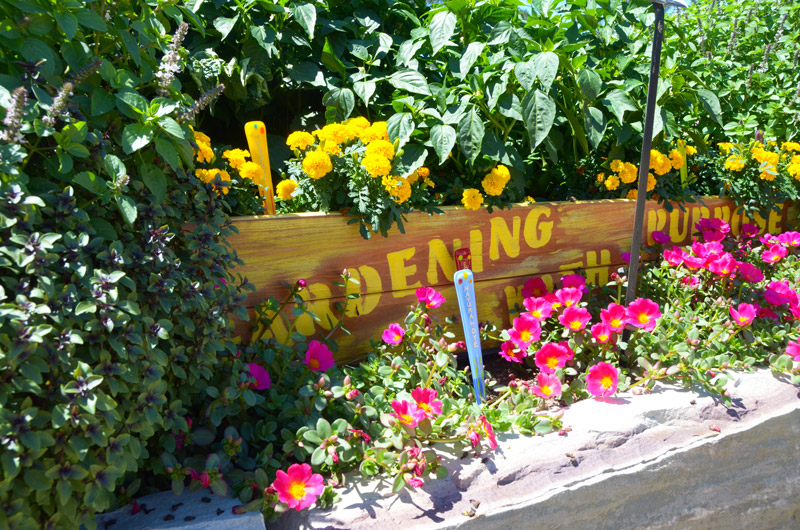The Facts About Hilton Head Landscapes Revealed
The Facts About Hilton Head Landscapes Revealed
Blog Article
What Does Hilton Head Landscapes Mean?
Table of ContentsThe Main Principles Of Hilton Head Landscapes Not known Facts About Hilton Head LandscapesHilton Head Landscapes Fundamentals ExplainedThe 4-Minute Rule for Hilton Head LandscapesExamine This Report about Hilton Head LandscapesThe Only Guide for Hilton Head LandscapesThe 10-Minute Rule for Hilton Head Landscapes
Line produces all forms and patterns and can be used in a selection of methods the landscape. Line in the landscape is created by the edge in between 2 materials, the outline or silhouette of a kind, or a long linear function. Lines are an effective device for the developer because they can be used to develop a boundless selection of shapes and forms, and they regulate movement of the eye and the body.

Lines can have several qualities, such as those described below, but they commonly offer different purposes. Figure 1. Lines in the landscape - landscapers hilton head island. The homes of lines identify how people react to the landscape, both emotionally and physically. Straight lines are architectural and powerful; they produce an official character, are normally linked with a symmetrical style, and lead the eye directly to a focal point.
Hilton Head Landscapes for Dummies
Straight lines are usually discovered in hardscape edges and material. Rounded lines develop a casual, all-natural, relaxed personality that is linked a lot more with nature and asymmetrical balance. Bent lines move the eye at a slower rate and include enigma to the room by producing concealed sights. Upright lines relocate the eye up, making a room really feel larger.
Vertical lines in the landscape include tall, narrow plant product, such as trees, or tall frameworks, such as an arbor or a bird house on a pole. Horizontal lines relocate the eye along the ground plane and can make a room feel bigger. Low lines are much more controlled and develop a sensation of remainder or repose.
Get This Report on Hilton Head Landscapes
Low lines are developed by low yard walls, walkways, and short bushes. Lines are utilized to attract types on a strategy. In strategy view, they specify plant beds and hardscape locations. Lines are also developed by the upright forms of developed features and plant material. There are 3 key line kinds that produce kind in the landscape: bedlines, hardscape lines, and plant lines.
Bedlines link plant product to your house and hardscape due to the fact that the eye follows the line, moving the stare with the landscape. Hardscape lines are developed by the edge of the hardscape, which marks the developed framework. Line can additionally be created by long and slim products, such as a fence or wall surface.
The Ultimate Guide To Hilton Head Landscapes
Kind is discovered in both hardscape and plants, and it is normally the dominant visual aspect that spatially arranges the landscape and commonly figures out the style of the garden. The form of frameworks, plant beds, and yard accessories likewise identifies the general form theme of the garden. Official, geometric types consist of circles, squares, and polygons.
Plants develop kind in the garden through their details or silhouettes, yet form can likewise be defined by a gap or adverse area between plants - landscaping hilton head sc (https://stevenagonzales5.wixsite.com/h1tnhdlndscps/post/transform-your-outdoor-space-with-hilton-head-landscapes). Circles can be full circles, or they can be split into half circles or circle segments and integrated with lines to create arcs and tangents
Hilton Head Landscapes - The Facts
Circles can likewise be extended into ovals and ellipses for even more other variety and passion. Circles are a solid layout type because the eye is constantly attracted to the center, which can be utilized to stress a focal factor or connect various other types. Number 2. Circular types in hardscape and grass panels.
The square form can also be segmented and secondhand repeatedly to develop a grid pattern. Unlike circles, squares are stronger on the sides, which can be lined up or overlapped to create unique patterns and more complex types. Polygons are many-sided types with straight edges. Triangulars, as an example, are three-sided polygons.
Meandering lines typically resemble the natural training course of rivers or streams and can be called smooth lines with deeply bent wavinesses. Twisting lines (Number 3) function well for paths, plant bedlines, and dry stream beds. Twisting lines can include interest and secret to a garden by leading visitors around corners to find new sights and areas.
Some Known Details About Hilton Head Landscapes

Figure 5. Fragmented sides: tipping rocks in path. Form is the most enduring quality of a plant (bluffton landscaping). https://h1tnhdlndscps.blog.ss-blog.jp/2024-07-03?1720010270. Typical plant kinds are well developed and standardized, as type is the most constant and well-known attribute of plants. Form can likewise be created through the massing of plants, where the overall mass creates a various form than an individual plant.
An extremely contrasting kind should be made use of with careone or 2 work well as a focal factor, however a lot of wreak havoc. Natural plant kinds, as opposed to over-trimmed types, need to establish the mass of the make-up. The relevance of overall form is basically depending on the seeing perspectivethe kind of a tree can show up fairly different to an individual standing under the canopy versus watching the tree from a distance in an open area.
Not known Factual Statements About Hilton Head Landscapes
Plant types also produce and define deep space or open rooms in between the plants, producing either convex or scooped forms in deep spaces. High-arching tree branches generally create a concave open space under the branches, and a round cover with reduced branches loads the area to create a convex type in the open room under the tree.

Report this page